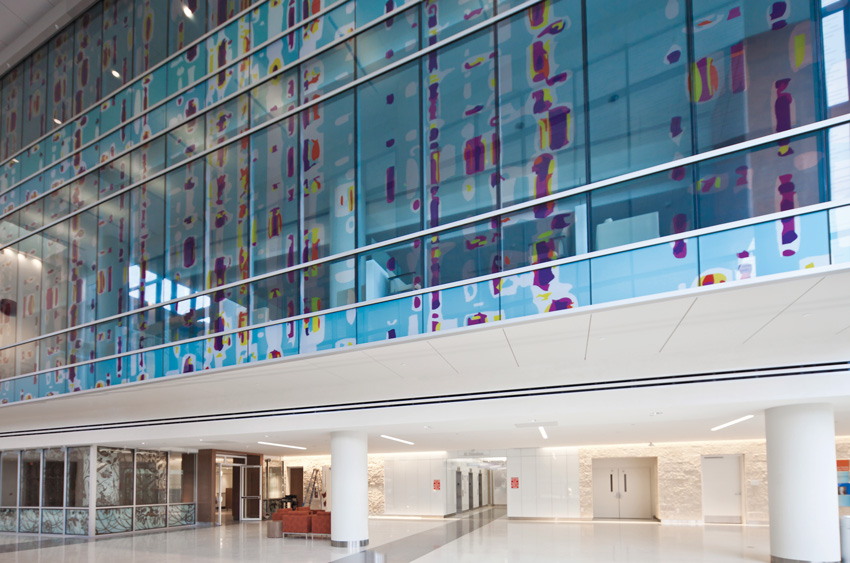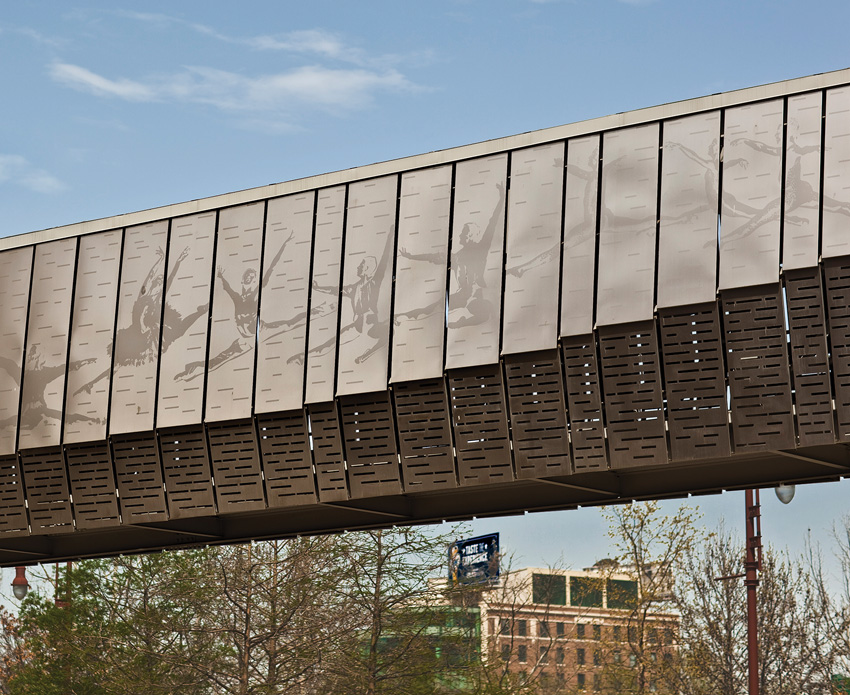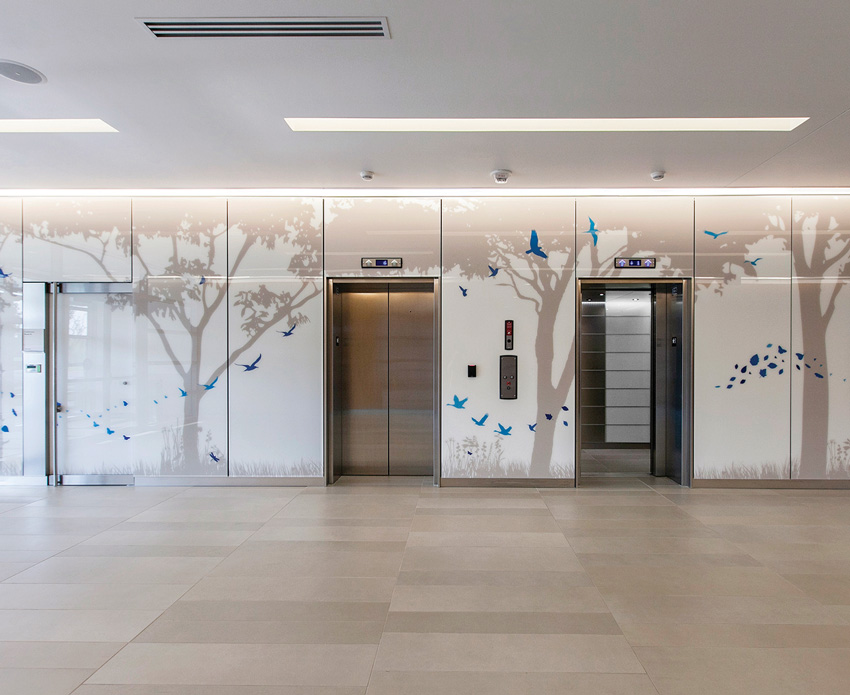Creative Potential of Vector Graphics for Architectural Glass Projects
Learning Objectives:
- Discuss the potential uses for vector graphics in large-scale architectural applications.
- Understand the difference between vector graphics and raster graphics, and explain how vector graphics overcome the challenges of resolution and scale.
- Describe the impact of transparency, reflectivity, and surrounding conditions on architectural glass that incorporates vector graphics.
- Explain how new technologies and design tools expand the creative possibilities for translating photographs and digital imagery into architectural laminated-glass designs.
- Cite examples of how vector graphics can be used in architectural laminated-glass applications to achieve project-specific creative objectives.
Credits:
This course is approved as a Structured Course
This course can be self-reported to the AANB, as per their CE Guidelines
Approved for structured learning
Approved for Core Learning
This course can be self-reported to the NLAA
Course may qualify for Learning Hours with NWTAA
Course eligible for OAA Learning Hours
This course is approved as a core course
This course can be self-reported for Learning Units to the Architectural Institute of British Columbia
Architectural laminated glass has become a favored material for indoor and outdoor projects, in large part due to its beauty, durability, functionality, and remarkable design versatility. Increasingly, photography and other digital images are popular choices for incorporating design elements into the glass. However, it can be difficult for designers to find and source imagery of an appropriate size for their projects, especially large-scale applications.

Photo courtesy of Forms+Surfaces
New online design tools that use vector graphics help solve this problem and give designers the ability to bring virtually any digital image or photo to architectural laminated-glass applications of any size or scale.
This course introduces participants to how vector graphics are used in architectural design by exploring where, why, and how they are incorporated into a variety of materials, manufacturing processes, and applications. Next, it explains what vector graphics are and how they differ from raster images. The course then examines in detail how vector graphics are used in architectural laminated glass. It concludes with real-world project examples.
To begin, it will help to understand a few vector basics.
Vector Graphics in Architecture
A “vector” graphic or image refers to a specific type of digital file format. Because they are made from a series of mathematical curves, vector graphics are infinitely scalable. This means they retain their visual integrity regardless of output size or scale. For example, a vector logo created at business-card size can be successfully enlarged for a billboard without sacrificing image quality, or vice versa.
The beauty of vector graphics lies in this infinite scalability. Regardless of output size, application, or viewing distance, the precision of vector graphics ensures clean, crisp detailing and high-quality end results. This makes them an ideal format for drawings, typefaces, logos, patterns, and other design elements that benefit from unhindered size/scale flexibility.
Vector-graphic files can be output through a variety of processes (like printing) and used with a wide range of media. Vector files can also be used to drive automated tooling that produces imagery, shapes, and patterns in, on, or for different materials and architectural applications.
Vector graphics are routinely incorporated into architectural design in many different ways. Following are a few common examples.
Vinyl Signage
Since scale is not an issue with vector graphics, large-scale vector images can be printed directly onto vinyl sheets for use as high-impact signs and banners that communicate wayfinding, branding, and promotional information.
Vector files can also drive vinyl die-cutting equipment. Letters, patterns, and shapes cut from sheets of adhesive-backed vinyl and adhered to windows or walls are routinely used to bring personality to retail storefronts, identify or define spaces, and label exhibits and displays.
Perforated Metal
Perforated metal is frequently seen in indoor and outdoor settings. Perforated designs on partition walls, railing infill panels, benches, chairs, and directional lighting shields are just a few examples.
Vector files enter into the perforation equation on many fronts. Used with automated punch tools or lasers to puncture metal, they ensure precise lines, smooth arcs, and consistent spacing between perforations. They can create complex punch files that produce fairly intricate perforated designs. Vector files also mean perforation patterns can be efficiently automated and repeated at any scale.

All images and videos courtesy of Forms+Surfaces
Vector files can be used to create designs in etched and perforated metal—in this case, stainless steel—to make statements of any scale, indoors or out.
Etched Metal
Etching is another method of bringing patterns and imagery to metal surfaces. Designs are applied to the metal by “masking” (covering) the areas in which a design will appear, then etching around the mask. The masked portions retain the original metal finish, while the etched areas display a contrasting surface appearance.
Vector files are often involved in creating etching masks. Sometimes they are used to generate masks that are directly applied to the metal surface with inks or other substances—an approach that produces distinct, smooth edges around the etched areas.
In other cases, masks are die-cut or hand-cut from vinyl sheets. When vector files drive the die-cutting equipment, the vinyl edges—and resulting etched design—tend to be crisper than those produced with hand-cut vinyl.
Regardless of mask type, once the mask is positioned, the metal is etched, typically by one of two processes. Acid etching is a traditional method that requires the use of acids and other corrosive chemicals to etch the unmasked metal. Bead blasting is a more environmentally friendly option that uses a photolithographic bead-blasting system instead of harmful acids or chemicals to achieve the final etched design.
Etched Glass
Etching is also used to bring patterns and designs to architectural glass. The process is similar to metal etching: a mask produced through one of several methods—with or without the use of vector graphics—is used to designate areas of a design that will not be etched. As with metal, the more precise the mask (i.e., those created with vector files), the more precise the end result.
As with metal etching, once the mask is in place, the glass is etched through one of two methods: chemically or by sandblasting. Regardless of which method is used, the masked portions retain the original glass finish, and the etched areas have a different look and feel.
Branded Glass
Many techniques can be used to bring branding elements to architectural glass. As described elsewhere in this course, vector files might drive cutting equipment for vinyl graphics that will adhere to windows or glass walls. They might be used to incorporate brand designs in etched glass, or they may be output as brand-aligned graphics for laminated-glass interlayers.
In addition to logos—a common use for vector graphics in branding packages—their infinite scalability makes them ideal for typefaces, patterns, and other identity components that benefit from unhindered size/scale flexibility, which is perfect for taking brand messaging across glass applications of any size or scale.
Laminated Glass
Laminated glass is a versatile material when it comes to incorporating colors, graphics, and other project-specific artwork. Laminated glass is typically constructed of two or more glass lites, between which one or more decorative interlayers are sandwiched. The interlayers serve as the “canvas” for a wide range of decorative treatments, including vector graphics.
Because laminated glass is frequently used in large-scale glass applications, the scalability of vector graphics gives designers virtually unlimited ways to create design statements in glass for spaces of all kinds.

Vector graphics can make an artistic statement at any size or scale. Precise vector output ensures high-quality end results.















